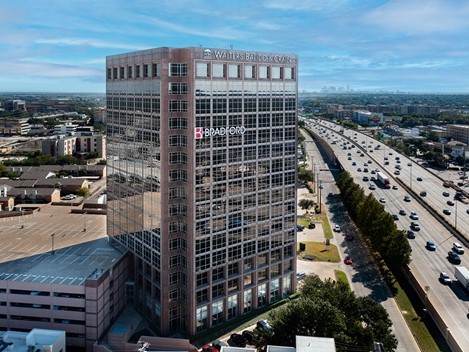On the News: Banks Get a Warning About CRE
The FDIC's 2023 Risk Review portends a shift in banks' growing preference for CRE.
Despite higher interest rates and mounting concerns about the economy, banks’ holdings of CRE loans continued to grow throughout 2022 and the first quarter of 2023, according to the FDIC’s annual Risk Review issued on Monday.
The industry’s median ratio of CRE loans to capital climbed from 185 percent to 194 percent during the period, with every FDIC region reporting an increase in their median concentrations of CRE loans. The West recorded the highest concentration at 281 percent and the Northeast was not far behind with 241 percent.
Banks’ affection for commercial real estate in the face of rising pressures is not that surprising when you consider that CRE loan holdings for banks have grown every quarter since 2013, as the report notes. But a turning point in the relationship, or at least a pause, seems to be underway, particularly when it comes to office properties.
Second-quarter FDIC figures are not out yet, but the agency’s report foreshadows a change that will most likely bear out in the figures. While noting aggregate asset quality remains high, the FDIC finds escalating rates, a worsening economy and office market refinancing difficulties pose a risk to bank CRE portfolios that will “dampen” loan growth. As a result of rising concerns, it advises banks to implement “strong risk management practices” to maintain healthy loan portfolios.
The FDIC cited the Fed’s April survey of bank loan officers, which indicated that commercial real estate underwriting was already tighter and that demand for CRE loans was weaker. And since then, concerns about CRE risk and banks have only risen.

The report focuses concern on deteriorating conditions in the office market amid higher interest rates and a weakening economy.
Four months ago, for example, Moody’s downplayed the potential impacts of troubled real estate loans and a handful of regional bank collapses on the banking sector as well as the impact of a potential banking pullback on CRE.
While conceding that CRE loans figure large for the banking sector, the credit agency noted that leverage was lower than it was in the pre-GFC era, and asset appreciation during this cycle provided “more cushion.” Meanwhile, Moody’s noted, banks accounted for only 38 percent of CRE lending, and borrowers had a wider variety of capital choices today.
Last week, according to Reuters, Moody’s downgraded the credit ratings of 10 small and mid-sized U.S. banks and put six large U.S. banks on notice, citing elevated exposure to commercial real estate, higher interest rates and economic worries.
Risks all around
Of course, the report is not the only signal from the agency that banks need to rein in commercial real estate risk. The FDIC has joined with the Federal Reserve and the Office of the Comptroller of the Currency to propose increased capital reserves for large banks making certain types of real estate loans.
Read also: Amid CRE Default Concerns, Bank Capital Rules to Change
Further, commercial real estate was not the only risky area of lending noted by the FDIC in its Risk Review. Crypto presents “novel and complex risks” to banks, for example, while cyber security threats and climate change also heighten the potential for trouble, the report finds. Here are six other key takeaways from the FDIC report regarding CRE:
- Ninety-eight percent of banks held CRE loans, and CRE was the largest loan category for almost half of all banks.
- CRE loans comprised 25 percent of total loans held by banks at the end of the first quarter, and 13 percent of total bank assets, The percentage of CRE loans mirrors the industry’s peak in 2009, but during 2022 and the beginning of 2023, CRE was 13 percent of bank’s total assets vs. 14 percent in 2009.
- Community banks hold 28 percent of banks’ CRE loans while holding only 15 percent of loans overall. More than 29 percent of community banks saw their concentration of CRE loans enlarge.
- Banks lent more on CRE across the property spectrum, and grew its unfunded loan commitments, which are mostly in construction and development. Since construction and development is the “riskiest” type of loan in the FDIC’s view, the agency cast doubt about whether many of these commitments will ever be funded.
- Nonfarm nonresidential real estate properties—basically income-producing commercial properties—made up the largest portion of CRE loan portfolios at 58 percent. Multifamily is the second-largest CRE loan category despite a slight dip in the first quarter of 2023. About 16 percent are construction and development loans.
- Aggregate asset fundamentals are holding—with all property types except office seeing an improvement in their fundamentals—and delinquencies are still relatively low. But CMBS delinquency rates, a key indicator for banks, ticked upward in 2023 due to stress in the office sector, and special servicing increased, particularly among office properties.








You must be logged in to post a comment.